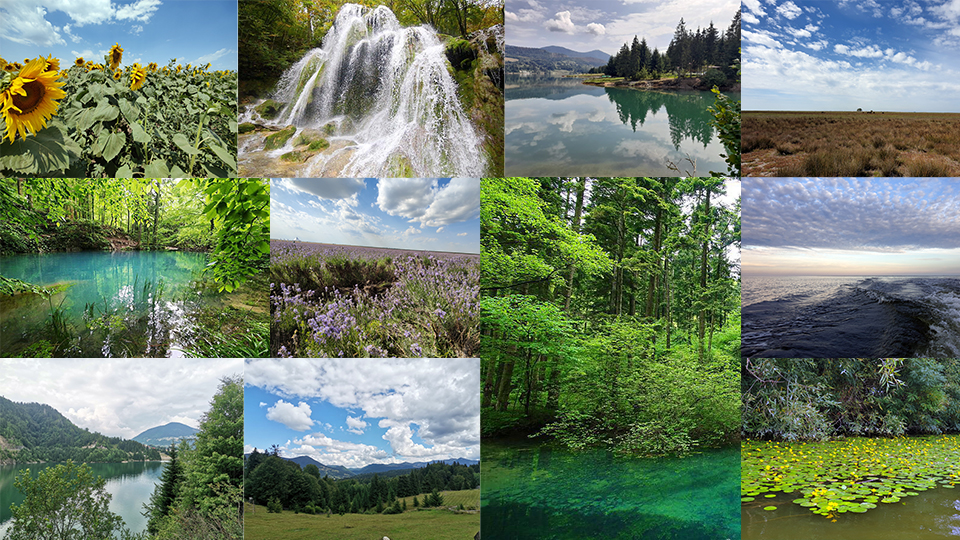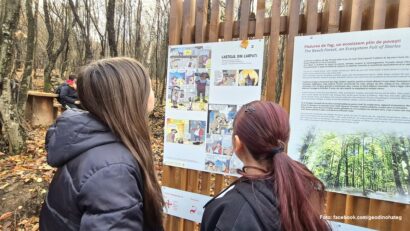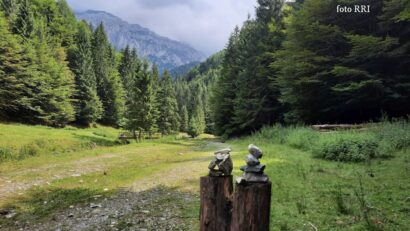The Sustainable ’15-minute City’
People live more and more in cities, and this must be taken seriously into account when designing and managing them

Eugen Coroianu, 29.03.2024, 11:57
People live more and more in cities, and this must be taken seriously into account when designing and managing them. The big metropolitan areas face big economic, social, health, environmental, food, and transportation problems. An older concept is brought back into focus today, namely: “the 15-minute city”. Its ultimate goal is, very briefly, for people to have at hand almost everything they need, making an effort of traveling for a maximum of a quarter of an hour. Vlad Zamfira – specialist in climate change and sustainable policies – describes the context:
“The cities we live in occupy only 2% of the earth’s surface, while they host half of the world’s population. They are responsible for 75% of global energy consumption, 80% of carbon emissions and hold 80% of global GDP. Estimates show that, by 2050, almost 70% of the population will live in these cities. At the same time, cities have a major impact on the lives of their inhabitants, but also on natural ecosystems, so it is important that their development is sustainable: that is, we can cover our present needs without jeopardizing the needs of future generations to ensure their livelihoods. Are ’15-minute cities a viable option? And what are they? It’s a simple concept, a concise and easy-to-remember term that represents a set of principles by which cities should be built. In a nutshell, this model involves having access to all basic services and more, such as shops , parks, schools and kindergartens, in a short time, less than 15 minutes on foot or by bike. What are the principles that guide the founder of 15-minute cities, Carlos Moreno? One – ecology – for a green and sustainable city. Two – proximity – living within walking distance of all other activities. Three – solidarity – to create connections between people. Four – participation – citizens should be involved in planning. In such localities, the prioritization of transportation methods is reversed compared to the current one. If at the moment the personal car is the basis of transportation, and the way we design and build cities, in the ’15-minute cities’ it would be on the back burner. Pedestrians and micromobility are in the foreground. Next comes public transport, and then sharing vehicles, which help to increase the number of users per vehicle and decrease the dependence on a personal vehicle.”
But the key word is “sustainability”. For this to exist, we look at 3 main categories: People – to be sustainable, a city must have a positive social impact, and consider the health of its inhabitants and all social classes. The planet – sustainable cities not only do not affect the environment, but they actually have a positive impact on it. Profit – the economic aspect cannot be neglected, in the long term cities cannot be sustainable if they cannot support themselves financially.
Who wins and who can lose from the application of the ’15-minute city’ concept? People are the main winners! According to studies, there is a direct correlation between the number of daily steps and obesity. One of them also shows that cities that are more pedestrian-friendly also have a lower obesity rate. In Romania, several sources show that the obesity rate is between 20 and 25% – this has increased from 14%, as it was in 1997. Then: less noise pollution. Many cars are very noisy. In a quiet city people are more productive and mentally healthy. And businesses benefit: you’re much more likely to stop at a store when you’re walking or cycling than when you’re speeding by. Studies show that on streets where pedestrians have been prioritized, local business revenues have increased beyond expectations.
Who has to lose? One of the effects of the transition to ’15-minute cities’ is the decrease in dependence on cars – something that directly affects a sector that supports, in certain areas, a significant part of the labor market. Returning to Bucharest, this is a city of contrasts, and the same applies to transportation. There are routes where you have easy access to the metro, tram or bus – which are separated from traffic, which makes them predictable and often the fastest option. At the same time, there are many other routes where to get from point A to point B using public transportation, you have to change several lines, which adds extra time to the journey. At the moment, in the capital of Romania, each sector is rebuilding streets according to internal decisions, not having a city-wide strategy. We see this problem not only at the level of Bucharest, but generally at the level of the entire administrative apparatus – lack of communication or faulty communication. The lack of adequate infrastructure for public transportation, the poor quality of most means of transportation and the lack of efficient connections are the main reasons why Romanians prefer to use their personal car, even for short distances. On the other hand, personal status is another important reason why Romanians drive, because in Romania public transport is associated with lower incomes, unlike other countries. The data and ideas presented come from an online material created by Romanian engineers Dalia Stoian – specialist in sustainable solar solutions – and Claudiu Butacu – specialist in renewable energy.






























